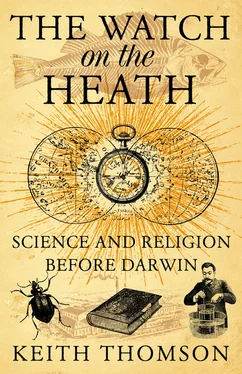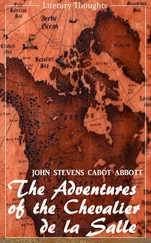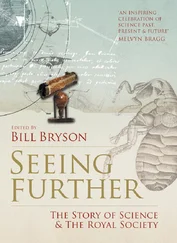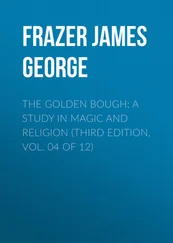Although some of his Greek contemporaries had doubts about the sun’s movement, Aristotle – the great authority through the Middle Ages – had had none. He held two powerful theoretical positions about the geocentric cosmos: that the ideal shape was a sphere, and that the ideal motion was circular. From this he built up the view that the sun, moon and planets were each harnessed to a different revolving, perfect, crystal sphere, one inside the other, with the imperfect earth stationary at the centre. The ultimate expression of this system of spheres was in Ptolomey’s Almagest or The Great Syntaxis (circa AD 160), on the strength of which Aristotelian cosmology reigned supreme for 1,500 years, until new astronomical calculations in the Renaissance, driven by the need for accurate, predictive star maps for navigation, began to force the creation of new explanatory models.
Nicolas Copernicus (1473–1543) in his De Revolutionibus Orbium Coelestium (published the year he died), forced the world to consider the heliocentric model in which not only does the earth revolve around the sun, but it also rotates on its own axis every 23 hours and 56 minutes. (Alternative models had proposed that, for example, the sun and planets stay still and the earth revolves, or that the sun and moon go round the earth and everything else goes around the sun.) Precise measurements made by Tycho Brahe (1546–1601) helped Johannes Kepler (1571–1630) make a new kind of astronomical sense. The movements of the planets – one of the great mysteries of the universe – could be boiled down to three very simple laws, all depending on the fact that their orbits were not circles but ellipses, all around the sun, except for the moon, which orbits the earth. The central consequence of Copernicus’s revolution is only too obvious to us today. Not only had the earth been displaced from the centre of the universe, it had become merely a tiny speck of matter in the immensity of space, no more or less perfect than the rest. 18
Copernicus died in 1543, leaving others to take up his work. Galileo Galilei was born in 1564 and acquired an immortal place in history for being forced by the Inquisition in 1633 to recant his belief in Copernicus’s heliocentric universe. When he made his first telescope in 1609 and looked at the moon, he had started another revolution, discovering that it is not the ideal body that the ancient Greek philosophers had believed and every poet had romantically declaimed; instead, it was ugly and broken, pockmarked with craters and rifts. Perhaps even worse, he saw that the sun, which from time immemorial had been seen as a perfect sphere giving light and life to the earth, was also imperfect. In the Bible, it forms one of the great metaphors for the coming Messiah: ‘The sun of righteousness shall rise with healing in his wings’ (Malachi 4:2). 19 Galileo discovered that the sun is blemished, with dark spots that move, apparently randomly, about its face. (His opponents argued that since these spots could only be seen with the telescope they must have been artefacts of the lenses.) Shortly afterwards Galileo observed that Jupiter has its own planets and that Venus shows itself in phases, like our moon. He realised that, beyond the visible planets and fixed stars, there were millions of other stars, not visible to the naked eye, and who could guess what lay beyond those. In this new concept of the heavens, the earth and its inhabitants really were minor in significance. Perhaps there were even other worlds such as ours, with other sentient beings, and we were not alone in inhabiting the cosmos.
Although he was surely as complex a character as any other haunting the corridors of power and influence in seventeenth-century Italy, Galileo has become one of the more sympathetic characters in scientific history, an honest man cruelly oppressed by the enforcers of religious and intellectual orthodoxy. 20 Isaac Newton, on the other hand, presents much more of an enigma; a brilliant scientist whom we very much want to admire, but also a dark, brooding man, his personality seemingly pinched and bare. It is odd that such a profound intellect should have been so insecure about money and position, so temperamental and suspicious. While his ideas on motion have endured, his works on alchemy and vitalism have not. And he managed to gather about himself a host of eager rivals and competitors and suffered cruelly from the common problem that major discoveries seem to come in bursts, often being developed quite independently by more than one person at the same time. Many a schoolchild has damned Newton for inventing the accursed calculus (which he called ‘fluxions’) that he and Leibnitz invented independently. Newton was not helped by his great brooding sulks; he would start work on a subject, become dissatisfied because the answer didn’t satisfy his own high standards, and then put it aside for a few years. Meanwhile others would be closing in on a solution.
England’s greatest scientist, Newton was born in 1642, the year that Galileo died. He took over the science of Galileo’s time and created a new intellectual sphere, a new world of mechanical laws with which we are still far more comfortable than we are with the modern world of quantum physics, where Einstein’s relativity and Heisenberg’s uncertainty reign. The ancients, particularly Aristotle, had thought that all matter was naturally at rest unless acted on by another force. This is again a weighty piece of common sense: when we see a stone on the ground, it does not move until we kick it. The question is, why does it then slow down and stop? Newton rewrote the science of motion and mechanics in a masterpiece of uncommon sense and mathematical precision. 21 He showed that all matter is in uniform motion (constant velocity, including a velocity of zero) unless acted on by an external force. Exactly opposite to Aristotle’s view of motion, Newton showed that an object will remain still or continue to move at a constant speed in the same direction unless some external force changes things. A moving stone slows down because a force of friction has slowed it, not because it somehow wants naturally to come to rest. A thrown stone describes a parabola through the air, not because it naturally tends to progress in a perfect theoretical circle, but because a force – gravity – has diverted it from the direction in which we threw it. Single forces always act in straight lines, not circles. Any trajectory other than a straight line must be the result of multiple forces acting together.
One of Newton’s most brilliant insights (with the assistance of Robert Hooke) was that the mechanism that keeps the planets in their elliptical orbits around the sun according to the rigid rules discovered by Kepler is the same as that which controls the fall of an apple from a tree, or shapes the trajectory of an arrow shot from a bow. From this he could predict that a projectile fired into the sky at a high enough velocity would continue indefinitely straight out into space. But one fired at some lower velocity would be attracted back to the earth by the opposing force of the earth’s gravity, and if the two sets of forces balanced , then the projectile would settle into orbit around the earth – just as the earth and the other planets orbit the sun, and just as the moon and communication satellites orbit the earth.
Nothing would be the same after Newton’s strict mathematics. Not even the simplest aspect of daily life on earth could be considered immune from the laws of science and the probing of scientists. Kepler’s laws of planetary motion might be glossed over as remote and literally other-worldly but Newton’s laws of motion touched every intimate detail of existence and were correspondingly subversive. Newton accelerated one of the great movements in science – which is to take the mystery out of everything. He also helped to explain some of the contemporary puzzles in the heliocentric model of the universe. If the earth is hurtling through space at many thousands of miles per second, why are we not all blasted off by the wind? If the earth revolves, and those in the northern hemisphere are standing up, why don’t the upside-down Australians fall off? The answer is that gravity holds our atmosphere in place, so there is no cosmic gale, and it holds the Antipodeans in place too. For everyone, ‘down’ is towards the centre of the earth. Science had given nature a new uncommon sense. And, in addition to the technical importance of Newton’s mathematics, the concept of a ‘balance of forces’ keeping the moon circling the earth and the earth in orbit around the sun, very quickly became a valuable metaphor for the description and explanation of a wide range of secular phenomena, including Malthus’s ideas about population growth being held in check by negative factors and Darwin’s ideas on evolution.
Читать дальше












